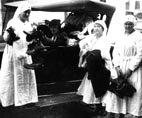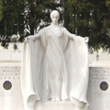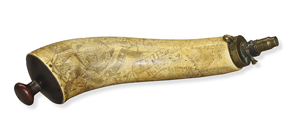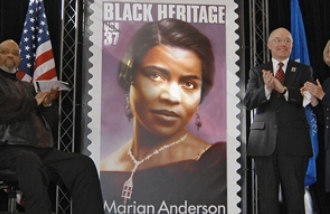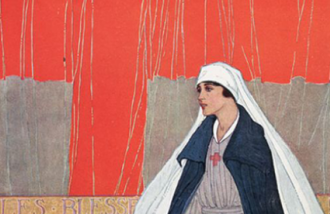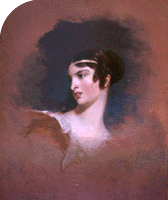
Fanny Kemble, 1832.
By Thomas Sully.
Feminine Images: American Portraits 1750-1860, brings together more than eighty images of women and young girls who lived during the eighteenth and nineteenth centuries. On view at the DAR Museum from July 1 through October 31, 2001, it includes portraits, miniatures, silhouettes, and daguerreotypes.
Like today's young woman who has her image captured through the illusory lens of the popular glamour shot photography, fashionable eighteenth and nineteenth century women also wanted to capture their images using the latest portraiture. Results varied greatly, from rigid copies to masterpieces of illusion. According to exhibition curator Olive Graffam, "American portraiture is rooted in the European and English tradition. In the eighteenth century, American artists copied freely from English prints and paintings. Although the realism of early American portraiture is questionable and the sitters drawn are only from the very wealthy, these visual images are important in providing a sense of our distant past."
Most artists settled in urban areas or traveled around America in search of commissions. Here they found the wealthy clientele who supported their endeavors. The artist James Earl (1761-1796) painted Elizabeth Courtney (1752-1813) of Charleston in 1795 in shimmering silks and golden chains, but also with a fashionable memorial pendant prominently displayed. Courtney's husband Humphrey commissioned Earl to paint his entire family. His daughter Elizabeth burned her unflattering image.
The arrival of the nineteenth century saw the expanding popularity of neo-classical themes in painting as well as the decorative arts. Gowns and hairstyles "in the Grecian manner" were as popular as the classical decorative motifs (bowknots, urns, grapevines, wreaths) found in furniture, ceramics, and silver. Jacob Eichholtz (1776-1842) portrays Sarah Humes Porter (1796-1867) in 1819 with the classical garb, curls, translucent skin, and rounded curves of a Grecian goddess.
As the nineteenth century progressed, an expanding middle-class and better trained artists brought inevitable change to the artistic scene. The most prolific and long-lived painter of the era was Thomas Sully (1783-1872), whose painting of the English actress Fanny Kemble (1809-1893) in 1832 shows his artistic skills and mastery of color. Sully painted Kemble at least 13 times. Sully's mannequin, on loan from the National Portrait Gallery, Smithsonian Institution in Washington, DC, has classical facial features and pierced ears, ready for any changing trends in jewelry.
This was also the era of the itinerant painter. Many of these artists were trained as ornamental painters. Their work is more realistic than the academic studies of the more skilled artists. John Brewster, Jr. (1766-1846) gave us the commanding presence of an unknown New England sitter with his strong and resolute "Maine Woman." Miniature portraits were small mementos given to commemorate special occasions or perhaps to mark a parting from loved ones. Changes in size and use over time were dramatic. During the 18th century almost all were painted in watercolor on ivory, and made to be worn and viewed by only the wearer's closest friends. After 1810 they were generally larger and often found displayed in less intimate settings such as on a wall or a tabletop. The tiny miniature of Alice DeLancey Izard executed between 1775-1777 in watercolor on ivory recalls the elegance and style of a wealthy and cosmopolitan eighteenth-century woman. Rebecca Sutton Barrett's (1790-1863) image painted over fifty years later clearly illustrates a shift to a different technique and fashion. Her image is much larger and is painted in oil and gold leaf on ivory.
Photography in its many forms overwhelmed the portraiture scene by mid-to-late nineteenth century. At long last the majority of Americans could own an image of family and friends. Sarah Hall Gwyer's daguerreotype is typical of the thousands made in America at mid-century. The advent of photography could be called the democratization of portraiture and was certainly one of the most important cultural events on the nineteenth century.
Curator
Olive Blair Graffam is Curator of Collections/Research Associate at the DAR Museum. Her expertise is in American decorative arts and in nineteenth-century cultural and social history. During the past fifteen years at the DAR Museum, she has served as curator in the various disciplines of furniture, silver and metals, portraiture, and schoolgirl art. She lectures and writes about American decorative arts, women's history, and nineteenth-century cultural history.
Her most recent publications include the DAR Museum catalogue, "Youth is the Time for Progress" which accompanied her 1998 exhibition on schoolgirl art, and the essay about turn-of-the-century kitchens which appears in the Winterthur book, The American Home.


